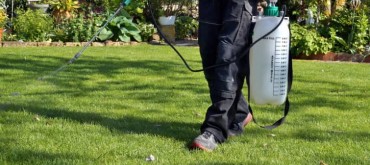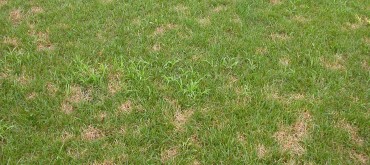Problem
Snow mould is a fungal disease that can appear in early spring as the snow melts. Fungal growth begins to develop in the winter beneath snow cover while the ground is unfrozen. Symptoms of snow mould can first appear as circular, straw colour patches. Snow mould thrives in lawns with a surplus of organic matter. There are two forms of snow mould, gray and pink. Grey snow mould symptoms appear in circular patches of a scalded or bleached variety. On lengthy turf, there is a general blighting rather than strong distinct patches. Pink snow mould patches are an orange, red or brown colour.
Solution
To manage both types of snow mould, it is recommended to minimize the lawn’s organic matter commonly referred to as thatch. Thatch is where the fungus can continue to survive during the summer months. An effective tool to diminish snow mould is to mow the grass until it stops growing or goes dormant, and avoid late fall fertilization while the lawn is still growing. This will minimize the amount of leaf area and prevent succulent growth, both key contributors to snow mould. If damage does occur, loosen any matted areas with a leaf blower while wearing a mask to encourage drying the surface. Do not rake the damaged area as this could cause further injury. It is recommended to lightly fertilize damaged turf to promote new growth. The damage caused by snow mould is rarely serious. Generally, infected areas will be a little slower to green up in the spring. Although it can appear that your lawn is in rough shape, most snow mould damage will recover with time. It takes approximately 40 days of consecutive snow cover for snow mould to develop. To give your lawn the best chance at surviving winter damage, it needs to be cared for all year.
To give your lawn a better chance at recovering faster, visit our lawn care services page here to get your estimate today!





